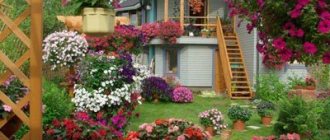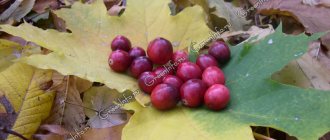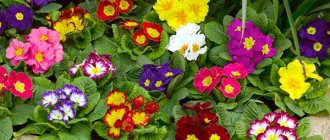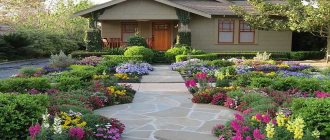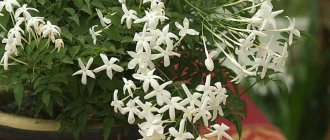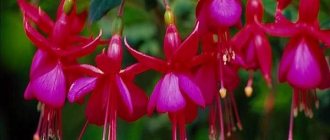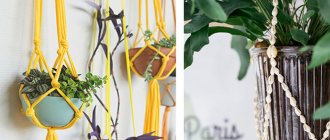As you know, flowers in the country can be majestic and modest, elegant and sophisticated, delicate and catchy. Some appear only once a year. Others are considered long-lived. They never cease to amaze their fans as they always remain at the peak of fame. Let's think together about what benefits do flowering plants on the site bring to people? What will help you find suitable plants to create stylish flower beds? How to create an oasis for relaxation and recuperation near a country house?
Flowers in the country and positive emotions
Scientists have noticed that bright plants on the territory of a country house help to relax after a busy week of work. Unique aromas and colors evoke joy and restore strength. However, it is important for summer residents to skillfully select a floral “ensemble” in order to create a spectacular oasis for heavenly pleasure.
To make the garden plot presentable, gardeners grow various flowers. And creative individuals use them to create:
- modular flower beds;
- rock gardens;
- mixborders.
Before deciding which flowers to plant in their garden, gardeners take into account the size, shade and even aroma of the plants. Some of them do not lose their attractiveness until the onset of cold weather, filling the garden with unique beauty. Others have to be planted every season. There are also those that bloom for only a few days. A fascinating journey to the kingdom of Her Majesty Flora will help you figure this out.
Snapdragon
This annual is popular due to its rich colors and delicate aroma. It blooms all summer and part of autumn - until the onset of frost. The variety of species (there are dwarf, low-growing, medium-growing, tall varieties) allows you to play with the design of flower beds and plant these plants in various corners of the garden. In its classic form, known for over 500 years, snapdragon is an erect plant. But breeders also developed hanging ones with long shoots - for window boxes or hanging baskets.
Photo: Instagram workshop_pattern_of_taatta_
Photo: Instagram larissa53
Photo: Instagram altair2015astrackan
- Landscape
10 signs of a would-be gardener who will ruin his entire harvest (check yourself)
Catalog of suitable flowers for a summer residence with photos
There are a huge number of flowering plants in nature. Many of them were cultivated for growing in summer cottages or city flower beds. To choose suitable options, many use a catalog with pictures of country flowers. This helps you get to know the plant better. Examine its delicate petals, foliage and stems. Imagine how the flower will look in the flowerbed. And which specimens are best planted nearby. Let's start our journey with the unpretentious and most popular plants.
Bright smile of the sun or calendula
Many gardeners enjoy growing calendula in their summer cottages. She has an unpretentious disposition. It has a long flowering period and is classified as a medicinal plant. At first glance, the flower does not cause much delight. However, in group plantings, it can fill the garden with orange-yellow colors.
Calendula has a number of medicinal properties, therefore it is actively used in folk medicine.
The plant belongs to the Asteraceae family. It has erect, branched stems covered with small silvery fibers. The leaves are oval-shaped, elongated. The buds resemble graceful baskets. They bloom at the tops of flower stalks. The petals are colored orange or yellow. Experts classify about 20 varieties of the plant.
The most popular options:
- Field;
- Medicinal;
- Radio;
- Indian Prince;
- Yuvel.
As a rule, calendula (marigolds) is propagated using seeds. They are sown in open ground or in seedling boxes. The time for growing these cute flowers in the country depends on the expected result. In mid-latitudes, calendula begins to bloom in June. The last buds are pleasing to the eye in September. Truly unique flowers.
Unsurpassed petunia
This cute plant survives in any type of soil, withstands temperature changes and does not require special care. It has rightfully earned the universal recognition of gardeners from all over the world. It is very difficult to grow such flowers yourself in the country from seeds. Therefore, experts advise purchasing ready-made seedlings. They are usually sold in flower pots.
It is advisable to plant flowers in the flowerbed in the second ten days of March. After all, they are not afraid of spring frosts.
Petunia pleases the eye with buds until mid-autumn. In the southern regions it blooms until early November. Gardeners grow various groups of plants in plots. Bush petunia has large buds with a diameter of 12 cm of regular shape. They come in single-color, two-color and terry. Miniature lovers admire the small-flowered group of petunias. And fans of lush plants are attracted by the hanging and vegetative group.
The most popular varieties:
- Pirouette;
- Anastasia;
- Charm;
- Mirage;
- Surfinia;
- Tumbelina;
- Priscilla;
- Cardinal;
- Typhoon.
It is almost impossible to mention all known species of petunias. The main thing to know is that the plant does not develop well in shaded areas. It is not afraid of open sun and needs regular watering.
Petunia is an annual plant. Therefore, every year you need to purchase young seedlings.
Sophisticated and modest marigolds
When looking at a catalog of flowers for a summer residence with photos, you cannot pass by marigolds. They came to Europe from the American continent. They have successfully taken root in the summer cottages of our compatriots. Flowers are compact or spreading bushes. The minimum height of the plant is approximately 15 cm. The tallest varieties reach 120 cm. Buds are formed on erect stems, which are colored yellow, orange and red-brown.
Gardeners use the following varieties to decorate their dacha area:
- Alaska;
- Yellow stone;
- Golden dollar;
- Kilimanjaro;
- Solar giants;
- Popsicle;
- Dwarf;
- Golden Ring;
- Lulu;
- Gold ring;
- Carmen.
Marigolds are very easy to grow indoors. In early spring, they are sown in prepared soil, wait for shoots to emerge and weed them. Water moderately if necessary. If frost is expected, cover the greens with plastic wrap.
Marigolds love open areas. They bloom until mid-autumn.
Bright lights of purslane
The flowers depicted in the photo at the dacha evoke admiration among many. After all, purslane is considered one of the most resilient plants. It thrives on rocky soil. It is not afraid of the summer heat, and every day it greets and sees off the sun with its petals. The plant grows very quickly, forming an original multi-colored carpet.
The most famous varieties used to decorate summer cottages:
- Sonya;
- Flamenco;
- Pun;
- Large-flowered;
- Terry;
- Garden.
In most cases, purslane is grown as an annual plant. The maximum height of the flower is approximately 25 cm. It has a spindle-shaped rhizome hidden underground. On the surface there are succulent shoots strewn with fleshy foliage. The buds appear at the beginning of summer and tirelessly delight the eye until mid-autumn. It is grown in plots, pots, containers and hanging baskets.
The flowering period of one bud lasts 12 hours. But thanks to their abundance, this is impossible to notice.
The majestic beauty of tulips
Flowers are representatives of bulbous plants. Every spring they decorate flower beds with their bright colors. The plant has an erect, rigid stem. Depending on the variety, it can be pubescent or smooth. Sometimes the shoots branch at the top, forming several buds at once.
The leaf blades are gray-green. They have the shape of an ellipse. They grow directly from the root zone, where the ovoid-shaped bulb is located. The buds consist of 6 petals, with an unusual color. They can be single or double. In clear weather they emit a pleasant aroma. Botanists count about 128 thousand varieties and varieties of tulips.
Let's highlight the most popular options:
- early (Princess Irene, White Prince);
- early terry (Monte Carlo, Foxtrot);
- Darwinian hybrids (Oxford, Candy Apple Delight);
- later (Long Lady, Perestroika);
- lily-shaped (Red Shine, Holland Chick);
- fringed (Kamins, Black Jewel);
- green-colored (Artist, Violet Bird);
- parrots (Blue Parrot, Green Wave);
- terry late ones (Ice Cream, Uncle Tom).
Yellow tulips of the Golden Parade variety and black tulips of the Black Parrot variety look great in summer cottages. Belicia's original multi-flowered species will appeal to fans of elegant miniatures. Every year new Dutch varieties appear on the market. The delightful beauty of tulips allows you to create a cozy corner for relaxation in your flowerbed.
Tulips love fertile soil of medium acidity. They reproduce vegetatively and using bulbs.
Persistent harbingers of spring
There are still remnants of snow in the fields, and delicate flowers already mark the arrival of the long-awaited spring. White bell-shaped buds are pleasing to the eye and give a lot of positive emotions. Leaf blades are lanceolate-shaped. The rhizome is presented in the form of a bulb. Snowdrops grow not only on forest lawns, but also as decorative flowers in the country. They are planted under the canopy of tall trees or spreading shrubs. As they grow, they form dense carpet plantations.
The following varieties are especially popular:
- Galanthus;
- Atkensey;
- Elvis;
- Say Arnott;
- Ophelia.
No less attractive perennials that welcome the arrival of spring often decorate garden plots. Crocuses belong to the Iris family and love open areas.
Single buds resemble a glass on a thin stem and are painted in the following colors:
- yellow;
- orange;
- lilac;
- violet;
- white;
- pink.
The stem is practically invisible because it is hidden under the ground. The flowering period lasts approximately 20 days. The buds open fully only on sunny days.
The following varieties are used for growing in the garden:
- Sowing;
- Beautiful;
- Cassiopeia;
- Artabir;
- Albus;
- Pallux.
Some types of crocus are suitable for making table seasoning - saffron. They use yellow stigmas located inside graceful buds. Crocuses appeared as an ornamental crop in Europe around the 16th century. The first were Dutch hybrids.
Unpretentious daffodils
These perennial flowers delight their fans for several weeks. The buds consist of delicate white or yellow petals. They are located around an elegant tube, painted white, soft pink, bright orange or scarlet. The plant tolerates spring frosts wonderfully. Loves sunny open areas.
Popular types:
- One-on-one;
- Gay Challenger;
- Texas;
- Ice King;
- Reply
Summer residents often plant wild varieties in their flower beds. Daffodils do well in rocky soil. However, they do not like temperature changes. Therefore, for the winter, plants are covered with fallen leaves or spruce branches.
Evergreen flowering carpet
Periwinkle is an amazing perennial climbing plant. It will decorate any lawn or slope in the country. The shiny, ellipse-shaped foliage is dark green throughout the year. Against the background of a lush carpet, blue buds consisting of five petals bloom. Various varieties are used in gardening. The most popular include “Variegata”, “Bowles White”, “La Grave”.
Playful irises
Perennial flowers that grow up to 80 cm in height fit wonderfully into the landscape of a suburban area. People often call them Petushki. They have thin, tapered leaves with a bluish tint. Large buds of blue, yellow, purple, and white appear on erect peduncles every season.
Thanks to the painstaking work of botanists, new varieties have appeared:
- About Town;
- Edriatic Vavs;
- African;
- Amarillo;
- Amethyst.
Cockerels do not require special care. It is enough to weed the plantings in early spring and water moderately during dry periods. They love fertile soil. Often such flowers are grown in the garden and country house to create a corner of pleasure.
Colorful autumn girlfriends
Phlox is a pretty perennial plant that came to Europe from North America. In its natural environment, it grows near ponds or wet forest clearings. Grows up to 150 cm. Has a compact but lush crown. On the tall stems of phlox, inflorescences are formed, filled with many miniature buds. Depending on the variety, phloxes are colored snow-white, pink, blue and red. They appear in mid-summer and decorate front gardens until early October. In addition, the flowers emit a pleasant aroma.
Phlox prefers sandy soil. It grows without problems in both shaded and sunny areas.
Majestic chrysanthemums
Today, approximately 50 species of these wonderful flowers are known. They come in different sizes, tones and configurations. They are actively used to decorate summer cottages.
The most popular varieties:
- Prominent;
- Odorless;
- Scaphoid;
- Gazelle;
- Korean dawn.
In order for the flower to maintain its original beauty, it is replanted every 5 years.
Chrysanthemum wonderfully tolerates autumn cold and feels great at a temperature of 15°C. When cut, it lasts for about 4 weeks, filling the room with an intoxicating aroma.
Undemanding biennials
And among biennial flowers you can find specimens that are distinguished by their undemandingness and hardiness.
Forget-me-not garden
The most unpretentious variety of this crop is the garden (or alpine) forget-me-not. It is a perennial plant, but is grown as a biennial. It blooms for about one month, as a rule, flowering occurs in the second half of May or early June. There are no special features in the agricultural technology of growing forget-me-nots. Feels best in partial shade. It can independently reproduce by self-sowing without the participation of a grower.
To plant forget-me-not seedlings, you need to choose common bowls, the seeds are distributed at a distance of 1.5 cm. They need to be planted very early, in November, December, January.
Daisy
The naive and delicate beauty of daisies will appeal to many. A perennial crop, but grown as a biennial. In general, it is unpretentious in care, with the exception of watering, moisture should be supplied regularly. Growing is optimal in open, sunny places; it is unpretentious in terms of soil, but it is better to plant on drained, light, cultivated soil.
Daisies are planted as seedlings in the second half of March, sown in a common wide and low container. The seeds are evenly distributed over the surface of the substrate, sprinkled with a thin layer of sand (literally 1 millimeter) on top. After the entrances grow, it is necessary to thin them out, removing the weakest ones.
Turkish clove
Turkish carnation (or bearded carnation) is another interesting, unpretentious representative of biennial flowers. It blooms in the second year of cultivation (as a rule, flowering lasts 30-45 days, occurring in June). It has interesting colors that can be patterned. Prefers sunny places or areas with diffused light. Blooms from late June until frost.
It is best to sow Turkish cloves for seedlings in late March or early April. It is recommended to initially select individual cups and plastic cassettes (since the crop does not tolerate carelessly picked picking), but you can also plant a common bowl. In the first case, the seed is placed in a hole 3 mm deep and covered with sand or earth. When planting in a common bowl, you need to make grooves with an interval of 3 cm and the same depth, spread the seeds at a distance of 3-4 cm and also cover them.
cornflower
Cornflower is a very hardy flower; it is not afraid of heat, frost, or cold snaps. Only sunny, open places are suitable for him. Drained, fertile soil is also suitable. It is completely undemanding in terms of care. The lovely flowers will look great in any corner of your garden.
It is better to plant cornflower seedlings in early April; seeds are sown in a common box at a distance of 3 centimeters from each other, and the top is covered with soil 3-4 millimeters thick. You can also plant them in cassettes and cups.
Digitalis
Foxglove (or Digitalis) is undemanding both in terms of care and growing conditions. At the same time, the flowers of this biennial culture are absolutely charming and very decorative! Flowering lasts all summer. Foxglove is resistant to drought and frost. It is recommended to plant digitalis in sunny areas (although they can also grow in partial shade); the soil should be permeable, loose, and fertile.
It is optimal to sow foxglove seedlings in the first half of March. It is necessary to plant in a common low bowl. The seeds are evenly scattered over the surface of the substrate, and sprinkled on top with the thinnest layer of sand or sifted earth (literally 1-2 millimeters).
Important! The plant is poisonous, so you should not grow it if there may be children or pets on the site. It is also necessary to wear gloves when working with the plant.
Perennial garden favorites
At all times, roses have delighted connoisseurs of flowering crops. Original buds adorn the tops of spreading bushes with prickly stems. They exude a unique aroma. They amaze with their variety of tones and long flowering period. Biologists classify roses into 9 main groups. Let's look briefly at each of them.
Park varieties of roses
The group combines decorative types of rose hips and roses of ancient origin. Flowers are used to decorate park areas. They look wonderful both in single and group plantings. They bloom at the end of spring and delight the eye with fragrant buds for a long time. Decorative varieties have buds with a diameter of about 10 cm. They are collected in small bouquets of 4-6 pieces. The leaf blades are usually leathery and slightly wrinkled. The maximum height of rose bushes reaches 2 m. Popular varieties: Ritausma, Grotendorst.
Repairers
Roses are tall shrubs.
Large terry buds, colored in the following colors, bloom on them twice a season:
- red;
- pink;
- snow-white;
- yellow;
- beige.
Roses miraculously withstand harsh winters if they are carefully covered with special devices.
Famous hybrids are grown in dachas: Georg Arends, Hugh Dixon, Paul Neuron, Georg Dixon.
Choosing flowers for the garden - tea roses
Hybrid tea roses were obtained through selection. In the middle regions they bloom at the end of June and do not stop sending out buds until late autumn. The bushes grow up to 150 cm. The buds have a terry structure and a variety of colors. Famous varieties: Athena, Angelique, Gloria Dei, Limbo, Sonia.
Polyanthaceae
The plant is a low bush strewn with flowers. The buds are collected in bouquets of 6 pieces. Petals can be either simple or double. Gardeners grow polyanthus roses in group plantings. In the northern regions they need reliable shelter. Low-growing varieties take root well in large containers.
Floribunda
Roses are profusely flowering plants that continuously decorate the bush from July to November. The buds are either simple or double, which are collected in inflorescences of several pieces. Famous varieties: Iceberg, Diadem, Nicole, Nicolo Paganini, Frisia.
Miniature
The original low-growing bushes grow to about 45 cm. During the flowering period, they are strewn with many double roses, painted in various shades. Some specimens are grown indoors, where they bloom all year round. Miniature roses are used for arranging rocky hills and rock gardens. The most popular types: Masquerade, Hummingbird, Mandarin.
Ground cover
The group consists of creeping shrubs. Dense foliage grows on long shoots. Their length reaches 4 m. Depending on the variety, the buds are simple or double. Used to decorate slopes and low walls. Famous varieties: Besi, Ondela, Snow Ballet, Fairy.
Flowers in the country - climbing roses
Roses are distinguished by many small buds that form lush bouquets. They appear during the flowering period on long creeping stems. This feature allows you to use the plant to decorate pergolas or entrance arches.
Original varieties are in demand:
- Dorothy Perkins;
- Excelsa;
- New Dawn;
- Flamentanz.
Shrubs (shrubs)
The group includes tall and powerful flowering bushes. In due time, graceful roses appear on them. They bloom once per season, but for a long period. The plant is resistant to temperature changes and unfavorable climatic conditions. Gardeners appreciate hybrid varieties: Mishka, Charlotte, Rococo, Abraham Darby.
Duchesnay
This unusual plant is often confused with... strawberries. It really resembles it both in leaves and “fruits”. This is what people call it: “false strawberry.”
The flowering period is short, the flowers themselves are yellow and inconspicuous, but they look beautiful against the background of a green carpet. By the way, this carpet does not lose its attractiveness all summer long; it spreads across the dacha area, but does not weave everything in a row. The berries that form after flowering are not poisonous, but tasteless, so throughout the summer season they serve only a decorative function. Duchesnea looks “like a cucumber” in the sun, even with extremely rare watering. So this is a great option for those who rarely visit their country house.
Photo: Instagram maman.vs
Photo: Instagram photo_trip_sochi
Photo: Instagram filifionka_annet
- Landscape
How to make a flowerbed that does not require complex care: 5 practical tips
Basic principles for choosing flowers for the garden
When creating stylish flower beds on your site, it is important to choose plants wisely. First of all, take into account:
- soil type;
- climatic conditions;
- natural humidity;
- plant need for lighting.
Next, plan the general appearance of the future flower bed or lawn. For example, for a tall floral carpet, the following would be suitable:
- coreopsis;
- rudbeckia;
- cat mint;
- sage.
Various types of Astilbe and ferns take root well in shady places. To create a harmony of shades at the dacha, they use purple Shower, yellow Night Candle, Lobelia and sky blue Scabiose. Romantic plantings are made from petunias, matthiola and phlox. A royal oasis of pleasure is created from climbing plants: clematis, campsis and honeysuckle. Roses, dahlias, gladioli and lilies will add greatness.
At the dacha plot, a flowering lawn-type recreation area looks gorgeous. Clover, daisies, carnations, cornflowers, and poppies are sown on it. There is no need to water the plants unnecessarily, but the area always looks beautiful.
When planning to decorate garden paths, they create bright ridges. Several varieties of flowers of different shades are planted on narrow plots of land. They should be low growing to create a simple floral design.
Decorative beans, maiden grapes and climbing roses are suitable for decorating gazebos.
Mixborders look great next to a fence or wall. They consist of seasonal plants that bloom at different times. As a result, the flowerbed shines in different shades from early March until late autumn. Both perennial and annual crops can be used.
Marigold
Also known under the Ukrainian name “chornobryvtsi”. They came to us from America, and now it’s hard to imagine a Russian dacha without them. And all because this is perhaps the easiest plant to care for, even for a beginner. By the way, they are easy to grow from scratch. You can start the sowing campaign in early spring, but it is better to do it indoors. At the end of April - beginning of May, marigolds are no longer afraid of open ground. But if there is a threat of frost, it is better to cover them with film.
In the open sun, marigolds bloom most magnificently. But, as with petunias, if it is not possible to water frequently, it is better to choose partial shade. They bloom until autumn and then “die”. But you can collect the seeds and grow them next year.
Photo: Instagram vovchik_dik
Photo: Instagram anna1_knyazeva
- Landscape
10 best garden shrubs that bloom with white flowers
Landscape Design Ideas
When purchasing a summer cottage, the owners, first of all, think about where to plant fruit trees and vegetables. However, without flowers the area looks very dull. To remedy the situation, experienced summer residents create magnificent landscapes of flowering plants on their territory. According to the principles of modern garden plot design, they take into account the combination of tones, sizes and methods of flower growth. Let's consider the most attractive offers.
When designing a lawn for recreation, first make a green lawn. It is sown with fescue or bentgrass. Next, voluminous flower beds are arranged in the middle of the site. Using the catalog, elite plants are selected. Garden roses of various groups are considered the most popular. They go wonderfully with hydrangeas, perennial cockerels, peonies, and phlox.
Creeping flowering plants will help decorate the walls. Most often they do not require special care. But lush carpets will fit original into the landscape design of the dacha.
Popular options are suitable:
- periwinkle;
- loosestrife;
- jasmine;
- aubration;
- veronica.
Perennial flowers are an original decoration for a summer cottage. Since they bloom at different times, flower beds always delight the eye with bright colors. Spring will be greeted by crocuses and snowdrops. Then daffodils and tulips will appear. Spring flowering plants will be replaced by peonies, lilies, bells, and petunias. Over time, they will pass the baton to frost-resistant chrysanthemums. The main thing is to arrange the flowerbed stylishly.
Typically, experts plant the brightest and tallest specimens in the central part of the site. This is followed by low-growing flowers in the country, which skillfully complement the idea of the landscape. Rock gardens are created in a similar way, in which the plants are arranged in tiers. As a rule, each flower composition has its own unique style. The photo shows several options.
In order for the flowerbed to always look impressive, it needs regular care. It involves fluffing up the soil in the root area. Regular feeding with chemicals. If necessary, moderate watering. Perennials that are afraid of severe frosts are carefully covered for the winter. Climbing crops are pruned correctly. Fulfilling all the requirements will help flora fans choose the right flowers for their garden. Create a spectacular landscape. Take proper care of it and enjoy the fruits of your labor throughout the whole season.
Lavender
An unpretentious evergreen ornamental shrub, popular not only for its blue or purple spike-shaped flowers, but also for its persistent, refined aroma. When planted in groups, the effect of a continuous “blanket” is obtained, for which this plant is especially favored by lovers of atmospheric photos. Some varieties bloom from early summer to autumn, while others bloom from April to July, and then produce a second wave of flowering in September.
Seeds Gavrish Medicinal series Lavender Voznesenskaya
An open area is optimal for lavender, and watering in hot weather is about twice a week.
Photo: Instagram _sleepy_apple_
Photo: Instagram lrinakachanova
Photo: Instagram pinacolada_garden
- Landscape
7 most beautiful climbing flowers for the garden
Calendula
For many, this is a country must-have, just like marigolds and petunias. And not only due to its medicinal properties. Its decorative component is also excellent.
If you sow calendula in the ground in late autumn, it will withstand frosts down to minus 5°C, and in the spring it will bloom very early. Then it will reproduce on its own in the sunniest places; it only needs to be thinned out and planted. You don’t have to bother with frequent watering - calendula tolerates a long absence of moisture well.
Photo: Instagram victoriaorlova_
- Landscape
16 plants that can still be planted in August at the dacha
Daylilies
These luxurious flowers were the heroes of legends, poems and novels many centuries ago, but to this day their popularity has not waned. New varieties appear every year, and in total about 70 thousand have already been bred.
The rules of care are simple: watering, periodically loosening the soil and occasionally weeding. Powerful roots can get water from the depths, so these plants tolerate drought very easily.
In good weather they bloom all summer. But they can also “take off their outfit” if prolonged rains begin or cold weather sets in for a long time. They live quietly in one place for several years, and it is recommended to replant them no later than August, so that they have time to take root before the cold weather.
Photo: Instagram irina_cherevko1010
Photo: Instagram flowers_the_world_is_beautiful
Photo: Instagram kattya_._
- House plants
How to replant plants correctly: instructions in 4 steps
Basics of floriculture.
Once you understand the basics, growing flowers is relatively easy, especially if you choose to transplant ready-made seedlings. This section will answer questions including...
- What types of flowers are right for you?
- Planting annual and perennial flowers
- Watering Guide
- How to support tall and voluminous flowers
- Flower trimming: Eco. Thinning. Pinching and Trimming
- Flowers: basic requirements for flowering and growth
- Color Guide: A to Z
Phloxes
Phlox will fit into the shaded areas of the dacha, where groundwater comes close to the surface. They love high humidity and coolness. And in the sun they quickly lose their decorative appearance. Subject to these basic conditions and the right choice of soil - without clay, with the addition of lime, with an average humus content - the bushes can grow for many years without special care and not lose their attractiveness.
Photo: Instagram kirykik
- Decoration
7 climbing plants you can easily grow in your apartment
